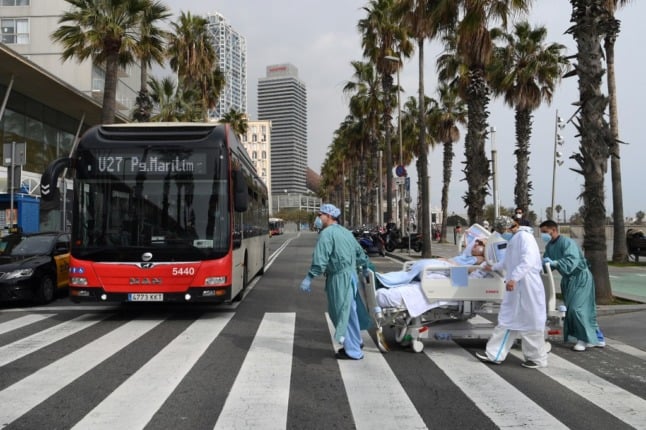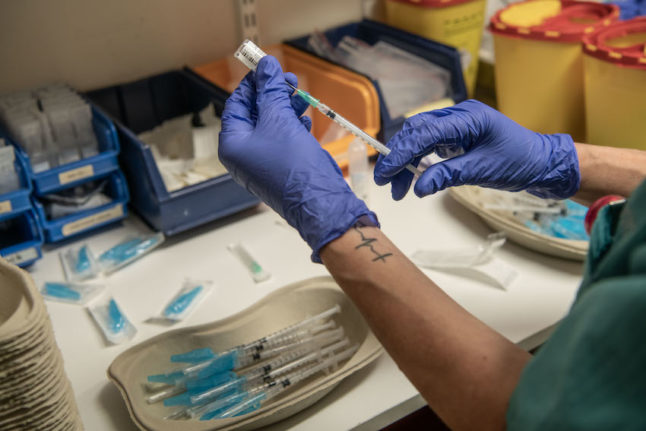The fifth wave of the coronavirus in Spain appears to have reached its peak.
On Monday August 8th, Spain’s Health Ministry reported the national fortnightly infection rate had dropped from 591 on Friday down to 549 cases per 100,000 people.
This means the incidence of the virus in the country has dropped by 100 points over the past week, with 39,638 new cases reported on Monday compared with 55,939 seven days earlier.
Over the past two weeks, Spain’s Covid-19 infection rate has decreased by 22 percent, and the drop in cases is even more pronounced in Catalonia (-52 percent), Asturias (-48 percent), Castilla y León (-38 percent) and Navarre (-37 percent).
The Balearic Islands have now replaced Catalonia as the region with the highest infection rate in all of Spain – 726 cases per 100,000 people over the past 14 days.
Despite the overall promising trend, hospitalisations and Covid deaths remain high, especially in light of the fact that 70 percent of the country’s 47 million inhabitants have received at least one dose of the Covid-19 vaccine, and 60 percent have completed their vaccination.
A total of 119 Covid deaths have been recorded over the past seven days compared to 157 the previous week. The total number of people who have died from Covid-19 in Spain since the pandemic began now stands at 82,125.
There were 1,047 new hospitalisations over the weekend, taking the total number of people currently in hospital in Spain with Covid-19 up to 10,441.
Bed occupancy at intensive care units has also risen slightly to 22 percent, but in Catalonia (49.7 percent occupancy rate) and Madrid ( 31.3 percent) the pressure on hospitals is greater.
READ ALSO:
- Spain mulls whether Covid vaccines should be obligatory for some workers
- How is Spain’s fifth Covid wave affecting its care home residents?
- ‘Exhausted and at breaking point’: How Spain’s Covid surge is overwhelming Barcelona hospital staff
The truth remains that all of Spain’s 50 provinces have infection rates above 250 cases per 100,000 people – the highest risk classification (extreme) by Spanish health authorities – and falling infection rates are not resulting in dramatic drops in hospitalisations or deaths.
In the case of Malaga province, the incidence of the virus has fallen by 141 points in the past week, but on Monday the southern territory recorded 14 Covid deaths in a 24-hour period, the worst daily figures of the fifth wave.
So although the peak of the wave may have been surpassed, the evidence suggests that Spain is still not in the final lap of its quinta ola (the fifth wave).
A constantly evolving epidemiological situation and virus means regional authorities may think twice before rushing to ease restrictions once the incidence drops, especially given the fact that young people are the main group who still haven’t been vaccinated and they’re expected to return to the classrooms in September.
Future mutations and the fact that under 12s (11 percent of Spain’s population) are not yet approved to have the vaccine has led some experts to state that the prospect of a sixth wave in autumn is high.
According to virologist and former WHO director Rafael Bengoa, the de-escalation of Covid restrictions will be key to ending the fifth wave and prevent future ones.
“With the fourth wave we did not do it properly and then we had the fifth wave,” Bengoa told El País.
“This could happen again. And with the Delta variant we must have much more patience because it’s far more contagious. We should ensure two or three weeks with very low incidence and in that case we will have a good autumn”.



 Please whitelist us to continue reading.
Please whitelist us to continue reading.
Member comments